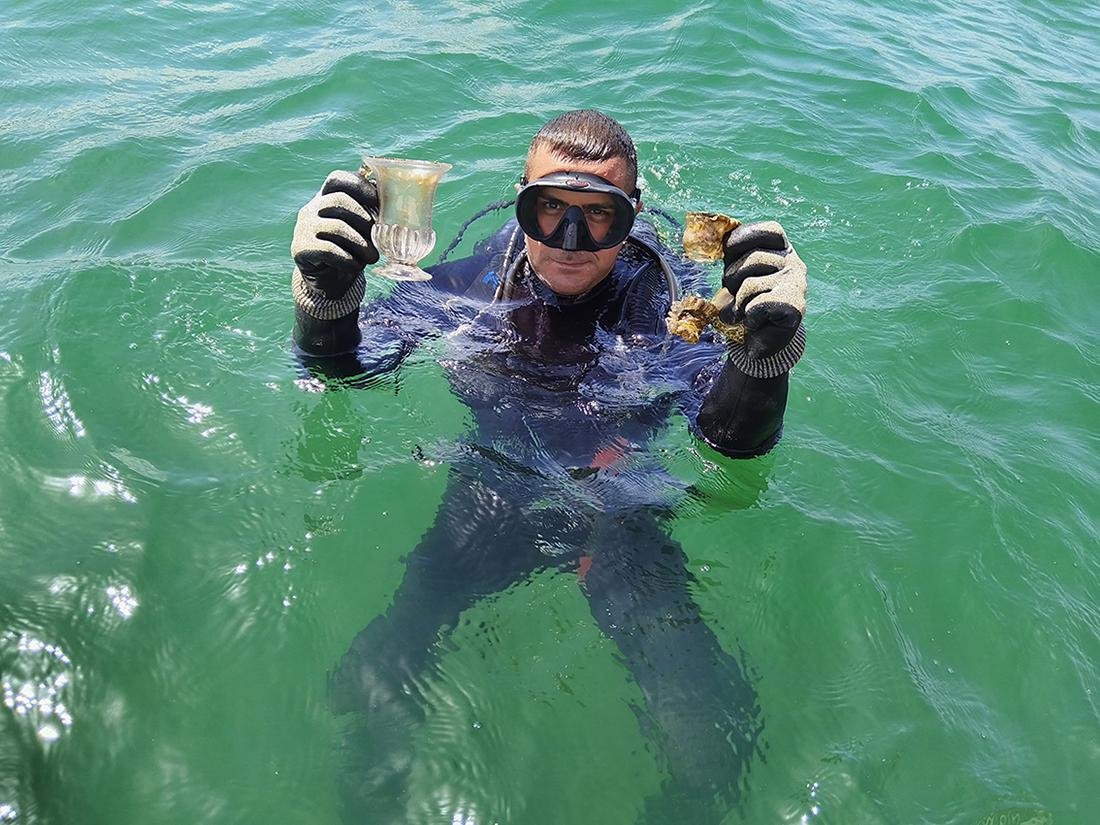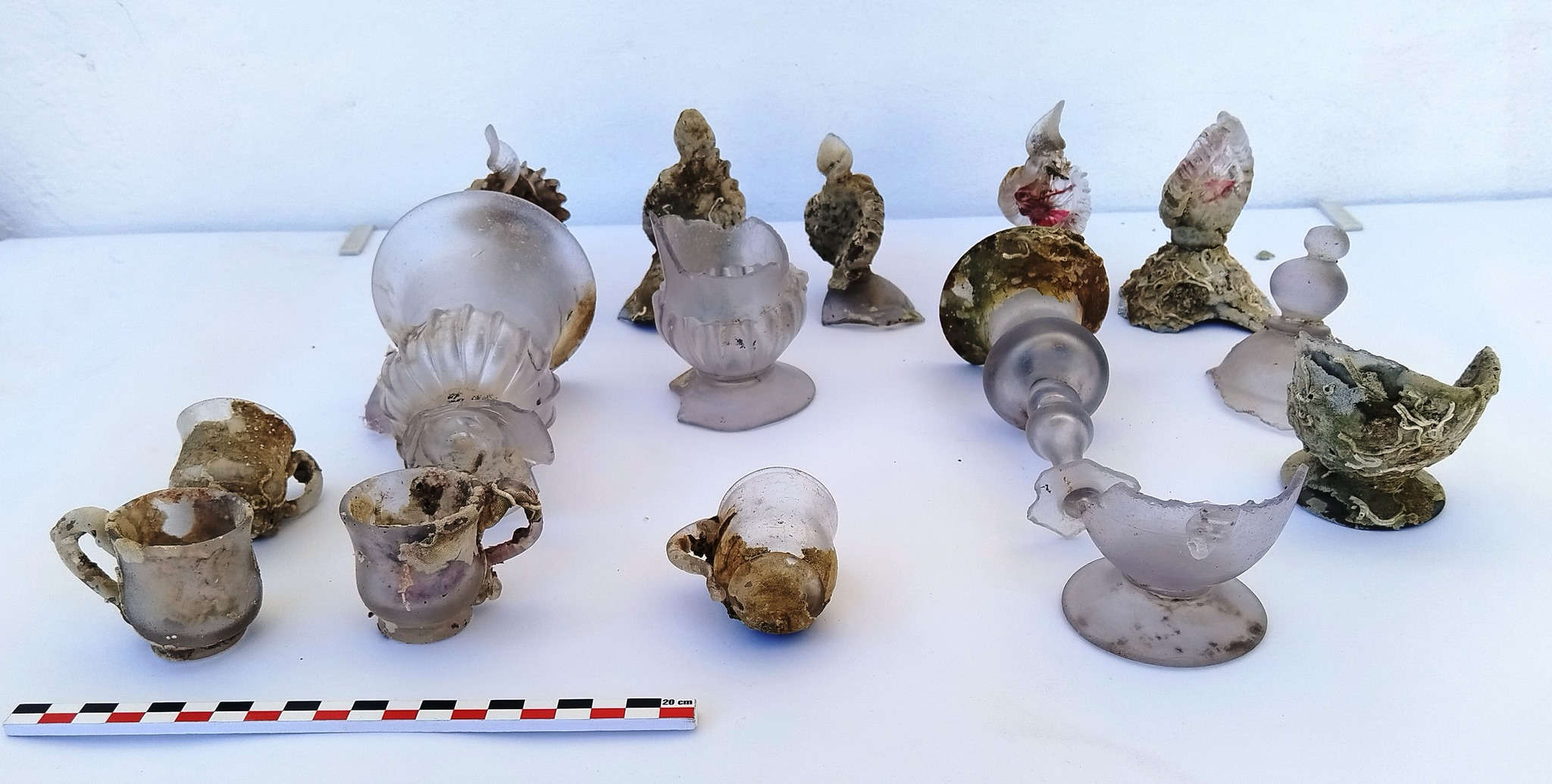In a remarkable underwater archaeological discovery, a team of researchers has unearthed a treasure trove of ancient glass vessels near the city of Burgas, Bulgaria. These 112 artifacts, believed to date back to the late 16th or early 17th century, are thought to have originated from the renowned glass workshops on the island of Murano, Venice. This groundbreaking find not only sheds light on ancient trade routes but also opens a window into the craftsmanship and economic interactions of the period. Join us as we delve into the details of this captivating discovery and explore its significance for our understanding of the region’s history.
The Underwater Excavation and the Glass Vessels

The underwater excavation near Burgas, conducted by the Regional Historical Museum Burgas (RHM Burgas), has uncovered a remarkable collection of 112 glass vessels. According to the museum, these objects are believed to have come from a Murano, Venice, workshop, dating back to the second half of the 16th century or the early 17th century. The exact dating and context of the glass objects, as well as potential shipwreck remains, are still under investigation by the team of archaeologists.
Evidence of a Maritime Mishap

The discovery of the glass vessels is accompanied by the presence of several iron anchor chains and fragmented ceramic vessels nearby, suggesting that these artifacts were part of a cargo spill from a ship that encountered rough seas. While the precise location of the shipwreck remains unknown, RHM Burgas has stated that there is a high probability that the wreckage is located near the site where the glass fragments were found.
Broader Archaeological Findings
The underwater exploration in the area around Burgas has revealed a wealth of artifacts from different historical periods, providing a more comprehensive understanding of the region’s maritime history. In addition to the glass vessels, the archaeological team discovered other significant findings, including:
- A depth of 2 to 2.5 meters (6.6 to 8.2 feet), where dozens of whole and fragmented glass vessels were found, further reinforcing the shipwreck hypothesis.
- West of the glass vessel area, Hellenistic pottery fragments, a small lead rod from the Roman era, and a stone fishing weight were uncovered.

Discoveries Near Historic Chengene Pier
The southeastern end of the bay, near the historic Chengene Pier, was another area of interest for the archaeologists. This site, mentioned in European diplomatic records from the 18th and 19th centuries, revealed a concentration of late antique and medieval amphora fragments, including parts of Gunsenin type III amphorae from the 12th-13th centuries. These findings add depth to our understanding of the area’s historical significance and maritime activities.
Findings at the Monastery Port Near St. Anastasia Island
Another significant site, known as the monastery port near St. Anastasia Island, provided additional historical context. Underwater inspections in this area uncovered fragments of ceramic vessels from the 18th-19th centuries, late antique amphorae parts, and an iron horn from an anchor. These discoveries align with historical accounts of significant maritime activities in the region.
Significance and Implications

The discoveries of ancient glass vessels and other artifacts near Burgas, Bulgaria, are crucial for understanding the trade dynamics and production techniques of glassware in the Balkans during the Late Ottoman period. The ongoing research promises to shed light on the poorly studied aspects of glass consumption, trade, and production in the region. Following conservation work, these newly discovered glass items will be exhibited at the Archaeological Museum in Burgas, allowing the public to appreciate these remarkable remnants of history.
Conclusion
The remarkable underwater archaeological discovery near Burgas, Bulgaria, has unearthed a treasure trove of ancient glass vessels, believed to have originated from the renowned glass workshops of Murano, Venice. This find not only sheds light on ancient trade routes but also provides invaluable insight into the craftsmanship and economic interactions of the late 16th and early 17th centuries. As the research continues, these artifacts will undoubtedly contribute to a deeper understanding of the region’s maritime history and the cultural exchange that took place during this pivotal period. The upcoming exhibition at the Archaeological Museum in Burgas will offer the public a unique opportunity to witness these captivating remnants of the past.
